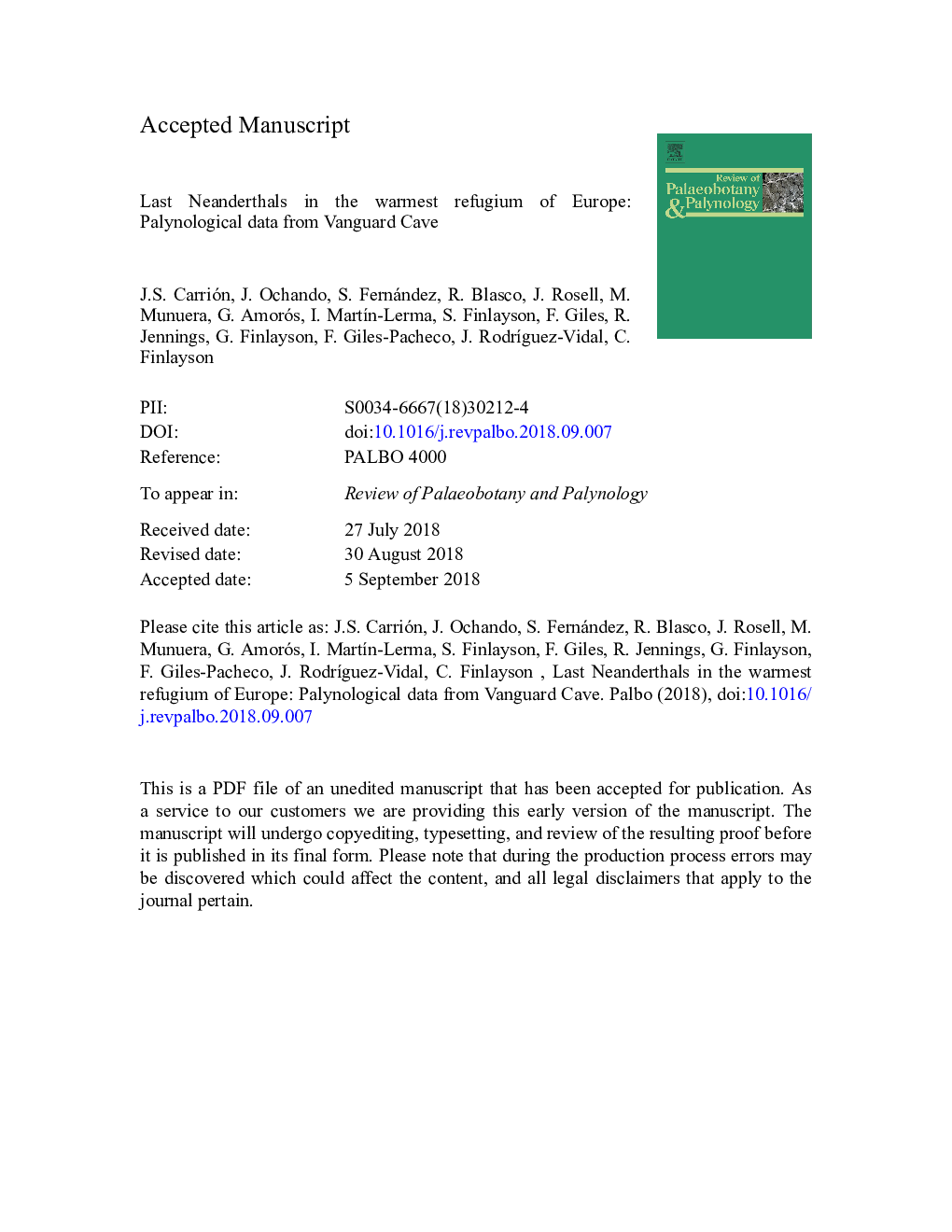| Article ID | Journal | Published Year | Pages | File Type |
|---|---|---|---|---|
| 11010068 | Review of Palaeobotany and Palynology | 2018 | 101 Pages |
Abstract
This paper presents pollen analyses on hyaena coprolites from Vanguard Cave, Gibraltar, with the aim of depicting the vegetation landscapes of the southern Iberian Neanderthals during the MIS 3. The Palaeolithic vegetation in the surroundings included pine, oak, juniper, Pistacia, and mixed woodlands, savannahs, riverine forest patches, heliophytic matorrals, rocky scrub with chamaephytes and hemicryptophytes, grasslands with heaths, shrubby grasslands, steppe-like saltmarshes, and littoral vegetation. We compare our results to those of previous palaeobotanical study in the adjacent Gorham's Cave providing data for the MIS 3 and MIS 2. Placing the palaeobotanical records of Vanguard and Gorham's Caves in European context, the southern coasts of Iberia emerge as the most thermic refugium of the Late Quaternary, which has important implications for existing arguments about the long survival of Neanderthals in the Iberian Peninsula.
Keywords
Related Topics
Physical Sciences and Engineering
Earth and Planetary Sciences
Palaeontology
Authors
J.S. Carrión, J. Ochando, S. Fernández, R. Blasco, J. Rosell, M. Munuera, G. Amorós, I. MartÃn-Lerma, S. Finlayson, F. Giles, R. Jennings, G. Finlayson, F. Giles-Pacheco, J. RodrÃguez-Vidal, C. Finlayson,
